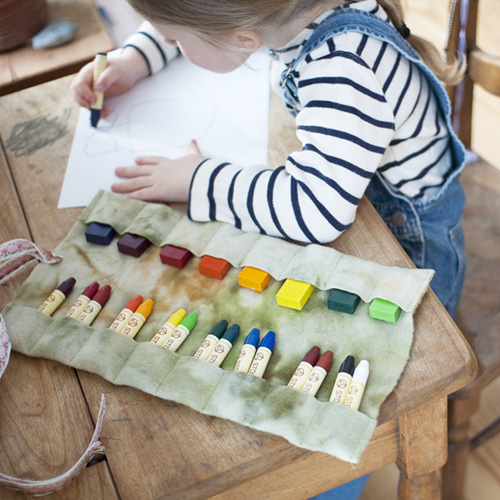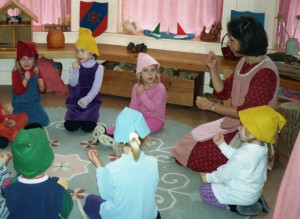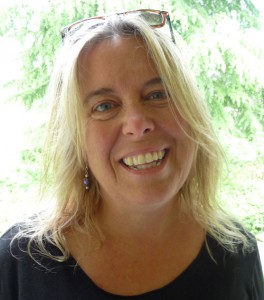Hey, Friends! Happy Autumn!
I apologize that it’s been a while since I’ve posted a “Sunday with Sarah” video. I love connecting with you through my weekly video series, but we have been so busy at Bella Luna Toys getting ready for the upcoming holiday season (be on the lookout for the dozens of new natural toys and crafts we will adding for the season!) that it’s been a challenge to find time to turn on my video camera each week.
Hoping to be back with you in video land soon!
In the meantime, I get questions by email weekly about Waldorf education, parenting, and toys. I realized that when one person writes, it is usually with a question that many others share.
So rather than replying privately to individuals, I thought it might be helpful to post those questions and answers here, for others to benefit from.
This week’s question comes from Nicole, a recent LifeWays grad who recently began teaching Parent/Child classes in Florida.
QUESTION:
hello sarah,
Nicole
ANSWER:
This is a great question, Nicole! It is a question on which not all Waldorf teachers agree, and one for which there is no clear answer.
In addition to the idea that stick crayons are important for being able to draw archetypal figures (with which I agree), there has also been a lot of research conducted within the last couple of decades that suggests that the use of stick crayons also helps to develop a child’s grip and their pre-writing skills. Developing this “triangular grasp” is also connected with brain development.
On the other hand, block crayons seem to be easier for younger children to hold and they are less likely to break, which is why they were used exclusively in Waldorf early childhood settings for so many years.
From my understanding, block crayons were originally developed for use by Waldorf grade school children over the age of seven to create borders in their main lesson books, as well as wide expanses of color when creating a drawing with sea or sky.
Without a definitive answer, I chose to offer both types of crayons to the children in my kindergarten class, believing that each type of crayon offered benefits and that children would instinctively choose the crayons they needed developmentally.
I found that in most cases children would choose the stick crayons to draw people, animals, trees, and other representational figures. Some of the 5- and 6-year-olds would imitate me as I drew, and use the sides of block crayons to create sea and sky. I found that 3-year-olds tended to gravitate to the block crayons, and you might find that block crayons are more appropriate for the 2- and 3-year-olds in your Parent/Child classes.
Joan Almon, a leading authority on Waldorf early childhood education, wrote the following article which you might find helpful:
Crayons in the Kindergarten: Block or Stick?
Parents and teachers new to Waldorf education often seek “rules” and have the feeling that there is one correct “Waldorf way.” As you delve deeper into this work, you will learn that there are many areas of ambiguity and difference of opinion among Waldorf teachers. It is always best to do what makes sense to you and to have a reason for your choice.
Your choices may change along the way as you learn more, and spend more time observing the children, and that’s okay! One should never let one’s teaching get rigid and bound by “rules.” That kind of teaching is not living and breathing.
Hope this helps. Let me know what information you decide to share with your parents!
With warmest wishes,
Have a question on Waldorf education, parenting, or play? Leave it here, and I’ll do my best to answer them all in future posts!





9 Comments
this was interesting and helpful — thank you!
mb
I personally back Barbara Dewey’s comment on the block crayons. I was an early Waldorf student in the late 70’s in Germany, where we would start out with stick crayons, due to the pencil grip. Block crayons where introduced in 2nd grade only, for coloring large expanses of fields, lakes or making borders.
HTH,
Maggie
I attended Waldorf school from kindergarten through 6th grade and I loved using my block crayons. I feel that offering both shapes of crayons to children and letting them use the ones they want to use, when they want to use them is best. We naturally know how to learn, so letting children be free to experiment and be creative is extremely important.
As a Waldorf teacher I agree that this is a debated topic.
The main point is that block crayons are for artistic work and stick crayons are for forming letters and numbers.
Block crayons should not be used as a writing tool.
Block crayons help children with drawing by “shading” rather than outlining (even young children)
Hello dear Sarah,
Thank you for another beautiful and helpful post! This is something I’ve been wondering about myself. I’m in the second year of a Waldorf Early Childhood teacher training, but this issue hasn’t yet been discussed (I’m sure it will be – drawing for early childhood is my next block).
I have another question – perhaps for you to address in another blog post or in a video. I know you’ve discussed it before but I am looking for even more input. My husband and I are both trained classical musicians – he a Ph.D. in Music Theory and a cellist, I am a classically trained singer and teach voice and piano lessons, and was an opera singer prior to having my own children. I’m really curious about what the right thing to do is with Suzuki music lessons for young children. I realize that Waldorf Education places a high value on Mood of the Fifth in early childhood, and continued use of the Pentatonic Mode through 3rd grade. I have a Kinderlyre and Pentatonic Flute and enjoy bringing the music to my children in this way. However, my son has a very strong affinity for music at 4 and a half, and I wonder if he may really enjoy and thrive in a Suzuki violin class. Can you speak more to this?
I have been thinking about this lately and this post is perfect timing! Any chance you could offer the dimensions to the crayon roll that is in the picture? I would love to make some for my children this year for Christmas. We have only been using block crayons and I have just ordered some stick. I love the quality and intensity of the Stockmar crayons.
On a side note: this year I started officially “homeschooling” my five year old and two three year olds, rather keeping them home from attending Kindergarten. Your Homeschooling Curriculum post was so helpful for me, as this was a difficult decision for me to come to. I am Waldorf Trained and really wanted my children to have a Waldorf Education, however for personal reasons sending them to a school is not in the cards. Who better to teach them than me! You are very inspiring and informative. Thank you!
I started the cello at 3 yrs of age (and followed Suzuki much of the time). Both parents were music majors. I was in choirs, performed solos often and also added more instruments as time went on. I’ve taught cello and recorder.
I am now a certified Waldorf Teacher and teaching. My son is five. He showed an interest in Piano. I am waiting. I think you have to reflect on why you do Waldorf and go with your instinct.
And ask is it for you or is it for him?
I really value your perspective, Leilani, as a Suzuki music student who started at a young age, and now as a Waldorf teacher and parent. Can you elaborate on the reasons why you decided to wait after your five-year-old showed interest in learning piano?
Part of what I consider a benefit of Waldorf education is that children are not fit into a mold and popped out like an assembly line of good students. The human mind has amazing capacities and when children are left to explore on their own and use their muscles and other body motions in new ways they may just develop capacities within themselves that are greater than we as adults can imagine. They are the future and the future needs new skills. If too early, we funnel them into what we already know, how are they going to create new ways of thinking and being. So I choose to wait, probably until age seven.
I’d rather him say at that age, “No thanks, I’ve tried the piano and don’t care to continue with it,” than start so young he doesn’t know the difference and then not know how to break from the mold, until much later in life.
He might do something else amazing with his life.
Well for a quick response those are my thoughts.